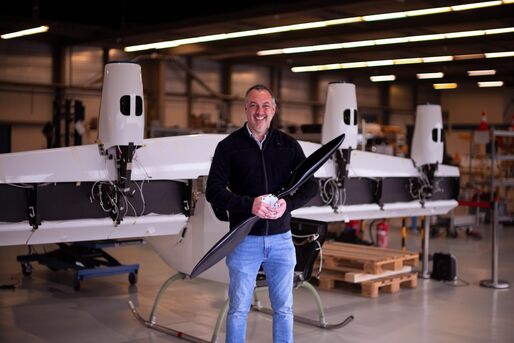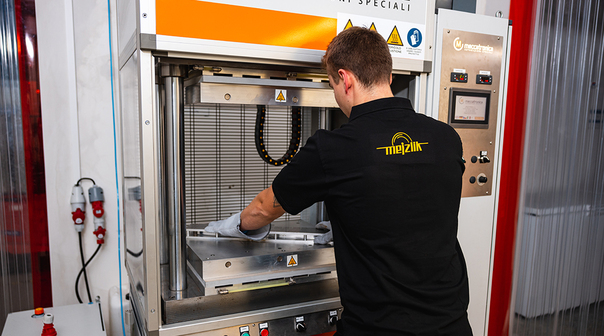Understanding Power
What is the power required to hover your drone? It depends mainly on the Propeller efficiency and the motor efficiency. First, we need to know the power required by the propeller to produce the thrust and we will call it mechanical power/ shaft power. It will depend on the thrust required and the diameter of the propeller (although it also depends on air pressure, temperature, humidity, for this study we will consider international standard atmosphere (ISA)).
Mechanical Power:
Mechanical power (W) = Propeller Torque (Nm) x Propeller speed (rad/s)
To measure the propeller’s performance, we need to measure the thrust, torque, RPM. If we have these three values, we will be able to calculate the propeller’s static efficiency, Mechanical power, static thrust & power constants.
The efficiency of the propeller will increase with increase in the propeller diameter. The graph above shows the power consumption of a 22’’, 26’’, 28’’ multicopter propeller. We can see that the power consumption is lower when we increase the diameter of the propeller. So, if we need to have lower power consumption, we must always try to fit the biggest possible propeller.
Electrical Power:
The electrical power consumed will depend on the motor efficiency (and the mechanical power of the propeller)
If the propeller requires 255.2 of mechanical power and if the motor is operating at 78.64 % efficiency, then
Electrical power(W) = 255.2 / 0.7864 = 324.5
We measured thrust, torque, RPM, Voltage and Amps.
With this we can calculate:
Mechanical power(W) = Torque (Nm) x speed (rad/s)
Electrical power (W) = Voltage x Amps
Motor Efficiency = Mechanical Power / Electrical power
Motor efficiency:
Motor efficiency = Input power / Output power
The motor efficiency changes with change in torque and RPM. Below is an example image of efficiency map of a motor.

So, we need to design a propeller that operates at the efficient point of the motor to have a lower power consumption. But most of the motor manufacturer do not give the efficiency map of the motors.
Ideally if we can simulate the motor efficiency and the propeller efficiency before manufacturing, we can perform some optimization in terms of weight and required thrust to find the optimal solution theoretically.
We at Mezlik propellers can simulate the propeller and get an estimate of the propeller’s performance before it is being manufactured. We recently partnered with one of the motor manufacturers who has the capability to give the efficiency map of the motor. “here” you can see how this helped to increase the overall efficiency.
2 Blade and 3 Blade Propellers, which is better?
As we saw earlier to see the power consumption, we must first see the mechanical power of the propeller. Below is the graph of 2 blade and 3 blade 28’’ propellers. We can see that the mechanical power is almost the same.
But why in general the three blade propellers consume more electrical power?
The reason is the motor efficiency. If we use the same motor to compare the 2 blade and the 3 blade propellers, the motor efficiency using the 3-blade propeller might be lower in most of the cases because the 3-blade propeller produces more thrust and operates at lower RPM (higher torque)
But if you use proper motor KV with the 3-blade propeller we will be able to achieve the same efficiency level as the 2 blade propeller as well.
Raam Sundhar sundhar@mejzlik.eu
Radovan Dite dite@mejzlik.eu


